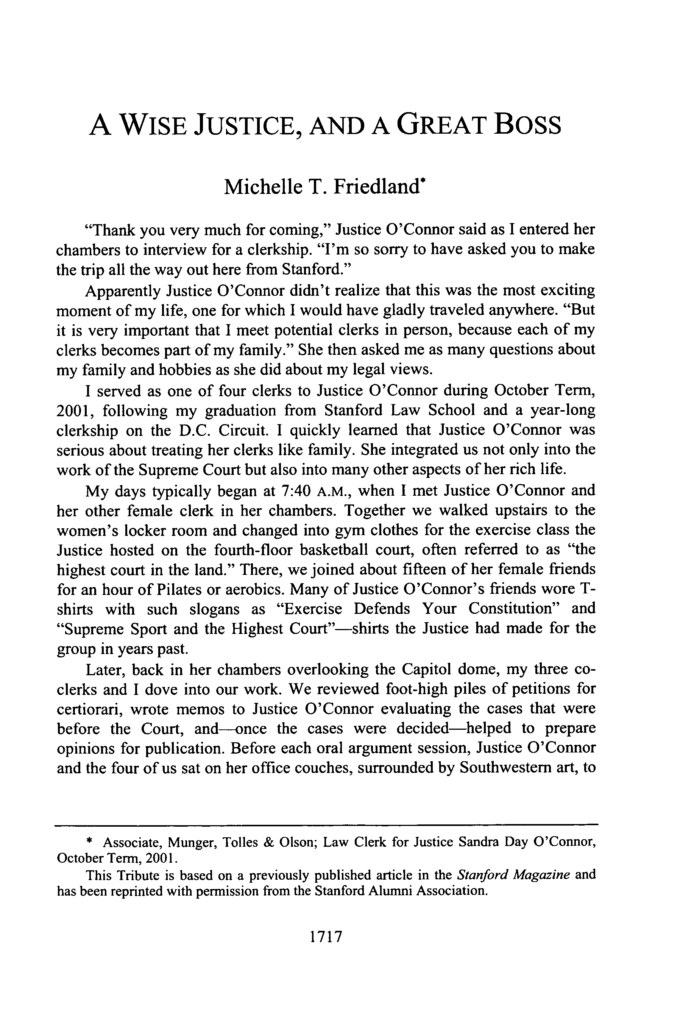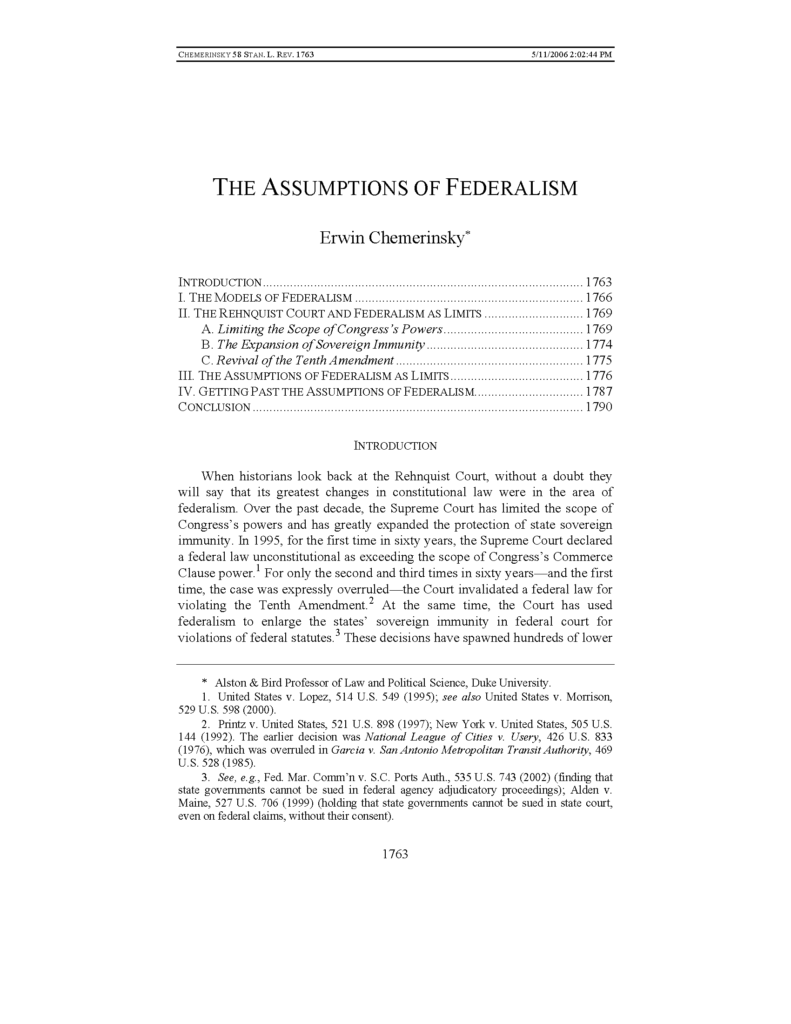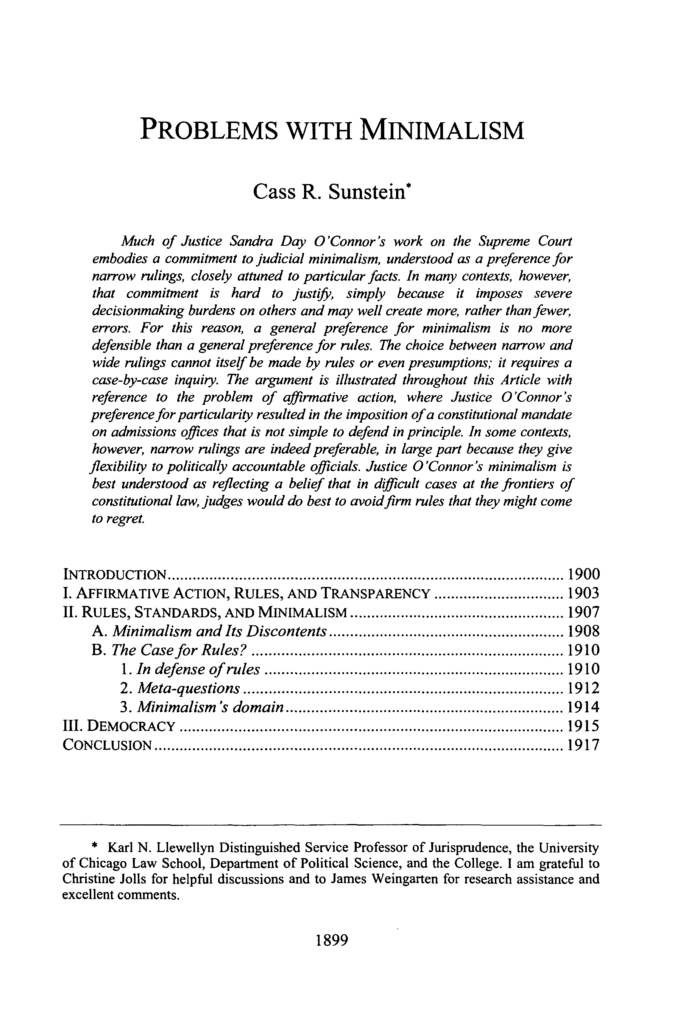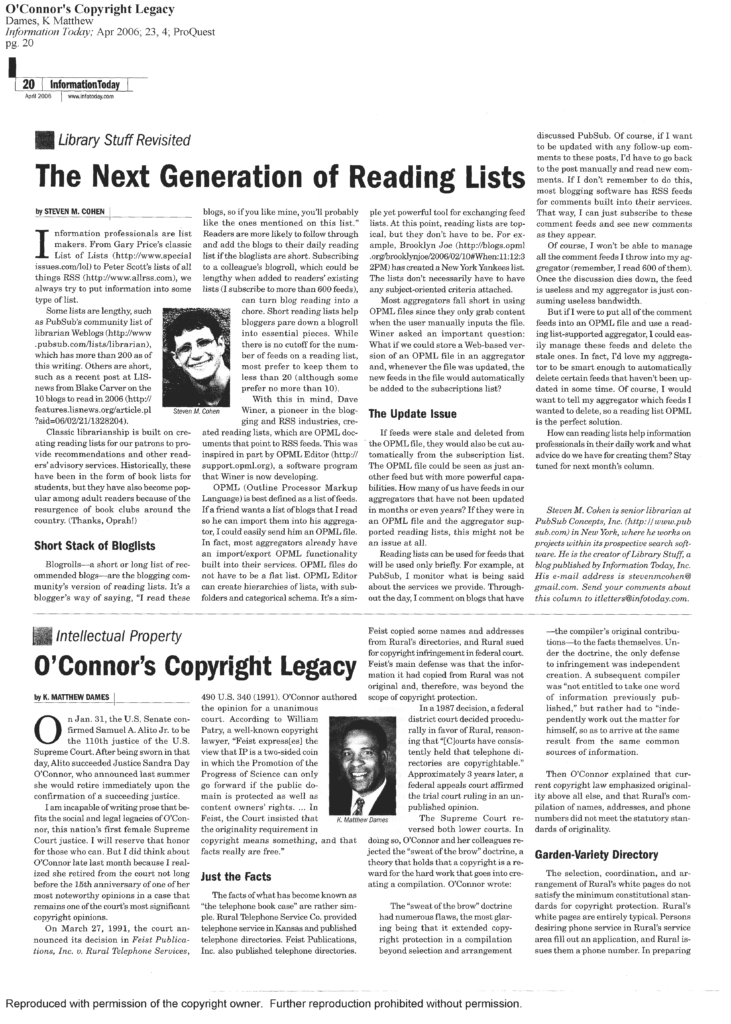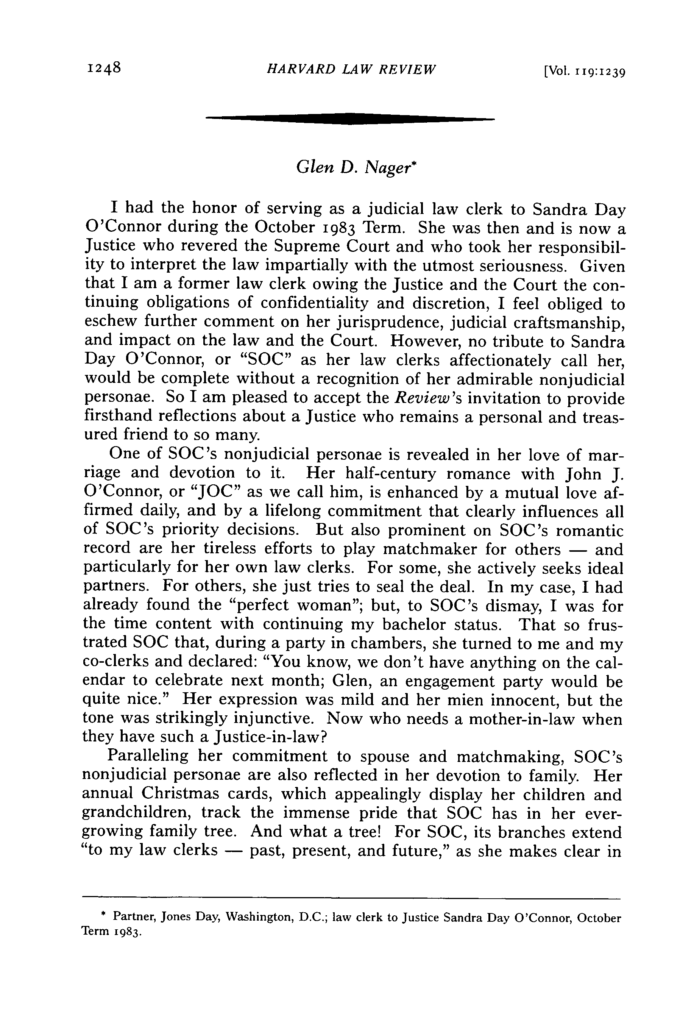The Essentials and Expendables of the Missouri Plan
Missouri Law Review Volume 74 Issue 3 Summer 2009 Article 3 Summer 2009 Essentials and Expendables of the Missouri Plan, The Sandra Day O’Connor Follow this and additional works at: http://scholarship.law.missouri.edu/mlr Part of the Law Commons This Conference is brought to you for free and open access by the Law Journals at University of Missouri School of Law Scholarship Repository. It has been accepted for inclusion in Missouri Law Review by an authorized administrator of University of Missouri School of Law Scholarship Repository. Recommended Citation Sandra Day O’Connor, Essentials and Expendables of the Missouri Plan, The, 74 Mo. L. Rev. (2009) Available at: http://scholarship.law.missouri.edu/mlr/vol74/iss3/3
The Essentials and Expendables of the Missouri Plan The 2009 Earl F. Nelson Lecture Sandra Day O’Connor
This speech was presented by Sandra Day O’Connor at the University of Missouri School of Law on February 27, 2009. It is the 2009 Earl F. Nelson Lecture and was part of the symposium titled “Mulling over the Missouri Plan: A Review of State Judicial Selection and Retention Systems.” The author has modified the speech and added citations for publication purposes.
It is an honor to have been asked to give this year’s Earl F. Nelson Lecture, and I want to thank the University of Missouri School of Law, the Missouri Law Review, and Dean Lawrence Dessem for the invitation. I am conscious of the history of this lecture series, which started in 1955 and can claim


